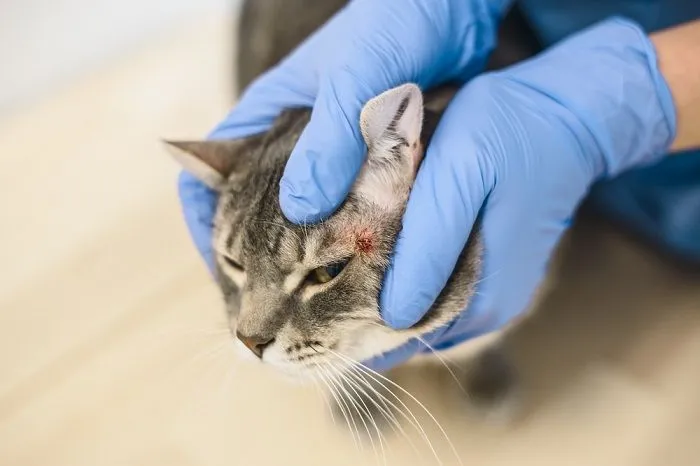Are you noticing your cats having allergies on their skin? Do you want to know the signs of skin allergies in cats and how to deal with them? Keep reading to know the various signs of skin allergies in cats.

Skin allergies in cats can often go unnoticed, causing discomfort and potential health issues on cats.
Recognizing the signs of skin allergies in cats is crucial for prompt intervention and ensuring the well-being of your beloved pet.
Here, you will get to know the eight key signs that could indicate skin allergies in cats.
Furthermore, the sign enables you to better understand and identify these potential allergic reactions.
Signs of Skin Allergies in Cats

To know if your cat has skin allergies, here are the signs you should seek for:
1. Excessive Scratching and Licking
A prominent sign of a potential skin allergy in cats is excessive scratching and licking.
Cats naturally groom themselves, but when this behavior becomes obsessive, leading to visible skin irritation or hair loss, it might indicate an underlying skin issue.
Also, pay close attention if you notice your cat constantly scratching, biting, or licking certain areas, as this behavior could signify an allergic reaction.
2. Redness and Inflammation
Skin allergies can manifest in cats through redness and inflammation of the skin.
Keep an eye out for areas that appear redder than usual or seem swollen.
Also, this could indicate an allergic response, potentially caused by contact with certain substances, food, or environmental factors.
3. Hair Loss or Bald Patches
Hair loss or the development of bald patches on your cat’s skin can be a clear indicator of an underlying issue, possibly linked to skin allergies.
If you notice your cat losing fur in specific areas or forming bald patches, it’s advisable to seek veterinary attention to determine the cause.
4. Persistent Ear Scratching or Head Shaking
Cats experiencing skin allergies might exhibit persistent ear scratching or head shaking due to discomfort caused by an allergic reaction.
Furthermore, excessive scratching or frequent head shaking can often signal an ear-related issue.
Also, they are possibly linked to an allergic response affecting the skin in and around the ears.
5. Skin Lesions or Sores
The presence of skin lesions or sores on your cat can be indicative of an allergic reaction affecting their skin.
These lesions might appear as scabs, open sores, or small bumps, suggesting a need for a thorough examination to determine the root cause.
6. Changes in Behavior or Irritability
Allergies, especially when causing skin discomfort, can lead to changes in behavior or irritability in cats.
If your usually affable feline companion becomes unusually agitated, irritable, or withdrawn, it might be a sign of an underlying skin allergy.
7. Gastrointestinal Issues
In some cases, skin allergies in cats can also manifest through gastrointestinal issues such as vomiting or diarrhea.
While these symptoms may not appear directly related to skin problems, they can be an accompanying sign of an underlying allergic reaction affecting your cat’s overall health.
8. Allergic Dermatitis or Hot Spots
The development of allergic dermatitis or hot spots on a cat’s skin indicates a localized allergic reaction.
Also, these hot spots might be warm to the touch and might cause intense itching or discomfort for the cat.
Identifying and treating these areas promptly is essential to prevent further complications.
In conclusion, understanding the signs of skin allergies in cats is pivotal for early detection and appropriate intervention.
Identifying these signs promptly allows for timely veterinary care and alleviation of your cat’s discomfort.
If you observe any of these signs or suspect your cat might have a skin allergy, consulting a veterinarian is highly recommended for a proper diagnosis and effective treatment plan.
Related Searches: